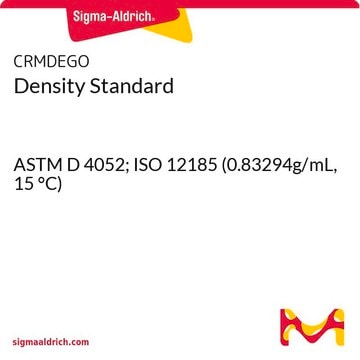W278807
Nonyl acetate
≥97%, FCC
Sinónimos:
N-Nonyl acetate, Acetate C-9, Nonanol acetate, Pelargonyl acetate
About This Item
Productos recomendados
origen biológico
synthetic
Agency
meets purity specifications of JECFA
cumplimiento norm.
FCC
FDA 21 CFR 172.515
Ensayo
≥97%
índice de refracción
n20/D 1.424 (lit.)
bp
212 °C (lit.)
densidad
0.864 g/mL at 25 °C (lit.)
aplicaciones
flavors and fragrances
Documentación
see Safety & Documentation for available documents
alérgeno alimentario
no known allergens
Organoléptico
green; fruity; waxy; sweet
cadena SMILES
CCCCCCCCCOC(C)=O
InChI
1S/C11H22O2/c1-3-4-5-6-7-8-9-10-13-11(2)12/h3-10H2,1-2H3
Clave InChI
GJQIMXVRFNLMTB-UHFFFAOYSA-N
Categorías relacionadas
Descripción general
Cláusula de descargo de responsabilidad
Código de clase de almacenamiento
10 - Combustible liquids
Clase de riesgo para el agua (WGK)
WGK 2
Punto de inflamabilidad (°F)
210.2 °F - closed cup
Punto de inflamabilidad (°C)
99.00 °C - closed cup
Equipo de protección personal
Eyeshields, Gloves
Elija entre una de las versiones más recientes:
¿Ya tiene este producto?
Encuentre la documentación para los productos que ha comprado recientemente en la Biblioteca de documentos.
Nuestro equipo de científicos tiene experiencia en todas las áreas de investigación: Ciencias de la vida, Ciencia de los materiales, Síntesis química, Cromatografía, Analítica y muchas otras.
Póngase en contacto con el Servicio técnico








